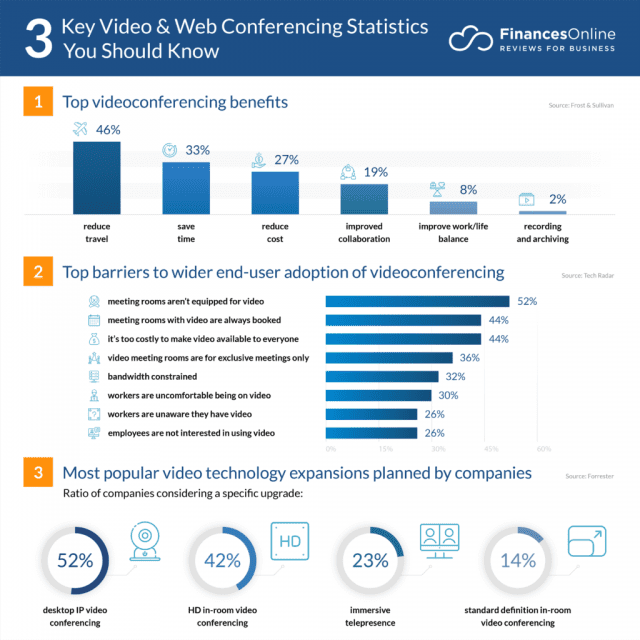Emerging video conferencing tool has been one of the most evolutionary technologies of the past two decades. Yet, it was the coronavirus pandemic that made its use indispensable giving rise to a new way of doing collaborative work, learning and even doing certain business. This also led both public and private organisations realise the possibility of having virtual meetings and collaborations, resulting in cost-savings and continuation of work. Video conferencing market is expected to witness good growth in the coming years, with smaller and medium size businesses expected to harness the technology further.
The global video conferencing market size is projected to reach USD 22.5 billion by 2026 from USD 9.2 billion in 2021. This market is growing at a compound annual growth rate (CAGR) of 19.7 per cent, according to Markets and Markets analysis.
The Fortune Business Insights anticipate that factors like remote learning and eLearning adoption, increased use advanced technologies like Internet of Things, Artificial Intelligence and cloud technology will provide a thrust to the market.
The video conferencing market is defined by Component (hardware, solutions, and services), Application (corporate communication, training and development, and marketing and client engagement) and Mode of Deployment.

DRIVING Factors
Remote learning and eLearning witnessed a significant uptick in the adoption by schools, universities, and institutions. Additionally, the massive increase in online banking as well as mobile adoption by end-users has resulted in providing a thrust, as customers opted for video banking options for savings time and money. In fact, video financial services and simplified video content by content creators have also played a role in making users comfortable.
Zoom cloud meeting, a free HD meeting app, became the most popular amongst users. As per Reuters, Zoom consumes about seven million bytes of data per day due to the massive use with daily meeting participants increasing to two hundred million in March 2020. As per India times, MS Teams users reached over seventeen million globally and the platform hosted 4.1 billion meeting-minutes daily.
It is estimated that about one-third of the organisations globally started using the web conferencing solutions for the first time since the onset of covid-19. Furthermore, over 90 percent of the organisations globally sought new strategies for engaging customers due to the pandemic.
As per Twilio, over 92 per cent of employers globally confirmed on adapting digital communications strategy and same number of business owners confirmed on increasing digital communication channels. Furthermore, use of Google Meet increased thirty times, with the app adding three million new users and three billion video meeting minutes per day since January 2020.
ADVANTAGES
Businesses can hope to save travel costs by 30 per cent using video conferencing, while 92 per cent of B2B marketers harness tools in their core marketing tasks. As per an assessment by Lifesize 2019, 66 per cent of executives opine real-time data-sharing and mobile video are critical to day-to-day communication.
SOGoSurvey finds that 56 per cent of CFOs worldwide aim to invest further in video conferencing systems for reducing unnecessary travel. Despite the covid-19 restrictions waning away, 50 per cent of employees globally are expected to telecommute in a decade or so, which can also play a vital role in reducing emissions and saving precious man hours, boosting productivity.
Another report stated that 83 per cent of large enterprises and 27.6 per cent of small businesses may buy video collaboration applications for their operations. In fact, companies can lose about USD 34 billion annually due to inadequate work conferencing practices.
Video and web conferencing platforms enable remote and mobile staff to collaborate and communicate with colleagues and business partners in an immersive way. The record-breaking 62 million downloads of video conferencing applications is an indicator of its holistic and global adoption.
HISTORY
The internet started emerging as an inevitable mechanism in the mid 1990s. It was in fact Skype that first became a global medium for video conferencing. Founded in 2003, Skype tried to reduce the cost of voice calls through use of a P2P protocol. In fact, it was amongst the top ten most downloaded mobile apps between 2010 and 2019.
The major video conferencing players of today include Google, Microsoft, Cisco Systems, Blue Jeans, Adobe, Zoom, Avaya Inc, Lifesize, and Citrix workspace, besides Skype.
INDIA
The Ministry of Electronics and Information Technology in India had announced the ‘Innovation Challenge for Development of a Video Conferencing Solution’ under the Digital India programme. It is estimated that India would be contributing significantly to the overall revenue growth of the Asia Pacific region, which is anticipated to jump from 19 per cent in 2020 to 24 per cent by 2030.
FUTURE of video Conferencing
As per Frost and Sullivan, integrated huddle room solutions will increase significantly in the times to come. Consulting firm Accenture believes that business clients will be launching a video call from help desk pages and contact sites with WebRTC embedding video into their websites.
Immersive Video combined with VR
Immersive video-tech combined virtual reality will merge both physical and virtual realms, making it possible to interact with audience and making them engaged. With increasing downloading speed and enhanced latency (single digit, with 5G), interactive content and events will be possible.
AI-aided Video Conferencing
Today’s flexi work culture is here to stay. Advanced AR and ‘Computer Vision Transform’ – videos enabling computers to derive information from images, videos and other inputs – will make video conferencing efficient in outcome and interactive in experience.
The power of ‘Natural Language Processing’ (NLP) is also going to be leveraged in the days to come.
Intelligent Video Analytics into Play
Actionable business intelligence can be gathered from video content analytics very soon. This will help in the management of large-scale events and facilities.
Smartphones with IP video surveillance systems and high-resolution digital cameras have been emerging as tools that perform video analytics playing a role in collaborative work and meetings.
Market and consumer data major, Statista estimated that the Augmented Reality market will reach USD 72.8 billion globally within 2024, having an enormous impact on the video conferencing market. Facial recognition, wearable technology and real-time data access will also be game-changers in the growth for collaborative video-technologies within half a decade.


